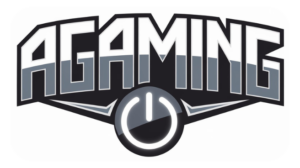This blog takes you through the various types of animation, from the classic charm of 2D animation to the stunning realism of CGI. So, explore the captivating world of stop motion, the dynamic energy of motion graphics, and even discover unique styles like experimental and whiteboard animation. It gives you a closer look at the techniques and creative processes behind each style.
Animation isn’t just about making things move—it’s about creating entire realities full of color, emotion, and life. It has evolved over the years and has the incredible power to transport us to new worlds, but the magic doesn’t stop there. It stretches on to a great deal, making the animated world feel alive and immersive.
But did you know that animation isn’t a one-size-fits-all deal?
There are many different types of animation to make things move, each with its style and vibe and artists use them to create a world that feels so real yet so unique. This blog will break down the different types of animation and reveal how they’re made and what makes them special. So, move ahead to find answers to your queries.
How Animation and Its Techniques Evolved With Time?
From the timeless charm of hand-drawn animation to the jaw-dropping realism of CGI, animation has evolved in ways that most people don’t even realize. There are different types of animation styles not only in movies but everywhere! These styles power video games, enhance advertisements, and even bring social media content to life.
In the early days, animation was all about hand-drawn techniques. The first animated films were created by drawing individual images on paper or film stock, each one slightly different from the last, and when shown in quick succession, they created the illusion of movement.
This was the foundation of animation, seen in popular animated movies like Gertie the Dinosaur (1914) and Steamboat Willie (1928), the first film to feature Mickey Mouse.
As technology progressed, stop-motion animation emerged, where real-world objects or puppets were photographed frame by frame. It allowed artists to create unique worlds and characters by manipulating physical objects, as seen in films like The Nightmare Before Christmas (1993).
The biggest leap came with the advent of computer-generated imagery (CGI). In the 90s, the introduction of powerful computers and software changed the game entirely. CGI enabled animators to create complex, lifelike visuals that were previously impossible with hand-drawn methods.
Movies like Toy Story (1995), the first fully CGI animated feature film displayed the potential of animation techniques. With CGI, animators could now design characters and environments in 3D, giving them more depth and realism than ever before.
In the 2000s and beyond, we saw the rise of motion capture technology, which allows animators to map real human movements on digital characters. This technology brought characters to life in movies like Avatar (2009) and modern video games, creating hyper-realistic performances without relying on traditional animation art styles or techniques.
Motion capture gave animators the ability to replicate subtle human movements, making digital characters feel more authentic and relatable. After this, hybrid animation, which is a blend of 2D and 3D animation styles, gained popularity in recent years. Movies like Spider-Man: Into the Spider-Verse (2018) combined traditional hand-drawn techniques with 3D animation, giving the film a unique, comic-book-inspired look.

The Essential Types of Animation and Their Uses and Techniques
Understanding different types of animation, their applications, and techniques can help in choosing the right style for a project. Below are the essential types of animation, along with their uses and techniques:
2D Animation
2D animation is the OG of animation! It involves creating movement in a two-dimensional space, meaning characters, backgrounds, and objects are drawn or digitally illustrated on a flat surface. It is one of the different types of animation styles that has been around for over a century and has evolved from traditional hand-drawn techniques to modern digital animation.
Despite advancements in CGI and 3D animation, 2D animation remains a beloved and versatile art form that continues to be used in movies, television shows, advertisements, and video games.
In 2D animation, each frame is slightly different from the one before it, and when played in sequence, it gives the impression that the character or object is moving. Traditional 2D animation requires artists to hand-draw each frame on paper, a meticulous process that could involve drawing thousands of individual images for just a few minutes of animation.
2D animators follow a structured workflow, starting with concept development and animation storyboarding, where key scenes are planned. Later, they design characters and backgrounds while ensuring consistency in art style. Animation techniques such as frame-by-frame (traditional), cut-out animation, and rigging-based animation bring drawings to life.
Effective Techniques to Design 2D Animation
- Character rigging and motion paths using software like Blender, Unreal Engine, Autodesk Maya, etc.
- Vector-based graphics for smooth scaling and manipulation
- Lip-syncing tools for character dialogue
3D Animation
Unlike 2D animation, which is limited to height and width, 3D animation incorporates depth, making characters, environments, and objects appear more realistic. The technique involves complex modelling, texturing, rigging, and rendering processes that bring digital worlds to life. Used extensively in industries like film, gaming, advertising, and virtual reality, 3D animation has revolutionized storytelling and interactive experiences. You can count it as one of the best animation styles that has shaped the art to a great extent.
Once the 3D model is created, textures and materials are applied to give it color, patterns, and surface details. Texturing involves mapping images onto the model, while shading determines how the object reacts to light, affecting its realism.
To make 3D characters move, animators create a digital skeleton (rig) with joints and bones. Skinning is the process of attaching the 3D model to this rig so it moves naturally. This step ensures that characters bend, stretch, and believably express emotions.
Animators use keyframes to define major movements, allowing software to generate in-between frames for smooth transitions. In high-end productions, motion capture (mocap) is used where real actors’ movements are recorded and transferred to 3D characters. This technique adds a layer of realism, commonly seen in video games and films like Avatar or the Avengers.
Artists use various lighting techniques to simulate real-world conditions. Rendering, the final step, converts all elements into a polished video sequence. Before moving further, availing 3D animation services can be highly time-consuming, especially for detailed, high-quality animations.
Effective Techniques to Design 3D Animation
- 3D modeling using software like Blender, Maya, or 3ds Max
- Rigging skeleton structures for movement
- Keyframe and motion capture animation
- Lighting and rendering for realism
Stop Motion Animation
Stop motion animation is a frame-by-frame animation technique where physical objects are manually moved in small increments and photographed to create the illusion of motion. When these images are played in sequence, the objects appear to move independently.
Unlike traditional or digital animation, which relies on hand-drawn or computer-generated images, stop motion uses real-world materials such as clay, puppets, paper cutouts, or everyday objects.
It is one of the known animation styles that has been used for decades, dating back to early cinema, and remains popular today due to its unique, tangible aesthetic. Despite being time-consuming, stop-motion animation is appreciated for its craftsmanship, authenticity, and artistic charm.
Animators start stop motion with a script and storyboard to plan out movements, camera angles, and character actions. Animators build miniature sets, backgrounds, and models using materials like clay, fabric, wire, paper, and plastic. Puppets or figurines often have articulated joints for better movement control.
The core technique involves moving objects slightly between each shot and capturing individual frames with a camera. When these images are played in rapid succession (typically at 12-24 frames per second), they create smooth motion.
Since stop motion requires capturing multiple frames over a long period, lighting must remain consistent to avoid unwanted flickering. Cameras are mounted on tripods or motion-control rigs to maintain stability.
Once all frames are captured, they are compiled and adjusted in editing software. Additional effects, such as color correction, compositing, and sound synchronization, enhance the final animation.
Effective Techniques to Design 3D Animation
- Moving real objects frame by frame (claymation, cut-out animation, puppets)
- Using DSLR cameras and specialized software like Dragonframe
- Lighting and set adjustments for continuity
Motion Graphics Animation
Motion graphics animation is one of the specialized animation styles that brings static design elements like text, icons, illustrations, and shapes to life through movement. It blends graphic design principles with animation techniques to create engaging visual content, often used in marketing, advertising, branding, and entertainment.
Unlike traditional animation, which focuses on storytelling through characters and narratives, motion graphics are primarily used for communicating information, enhancing branding, and creating dynamic visual experiences.
Designers create all necessary graphic elements, such as text, icons, illustrations, and shapes. These assets are designed using design tools imported into animation software and applied motion to static graphics. Animators set keyframes using tools like Adobe, After Effects, Cinema 4D, or Blender to define movement at specific points in time. The software generates smooth transitions between keyframes, creating fluid motion.
Effective Techniques for Motion Graphics Animation Design
- Smooth acceleration and deceleration of movement to make animations feel natural.
- Animated text that enhances visual storytelling (used in movie intros, lyric videos, and ads).
- Movement applied to vector elements for modern, minimalistic design
- Smooth transitions between scenes using fades, wipes, zooms, and morphing
- Background and foreground elements move at different speeds to create depth
Experimental Animation
Experimental animation is one of the unique and unconventional genre of animation that pushes the boundaries of traditional animation techniques. Unlike mainstream animation, which follows structured storytelling, character development, and commercial appeal, experimental animation focuses on artistic expression, abstract visuals, and innovative techniques. It often explores new ways to manipulate movement, color, sound, and texture to create surreal, thought-provoking, or emotionally intense experiences.
Experimental animation is not limited to a single style or technique. It can include hand-drawn sequences, stop motion, digital distortions, abstract shapes, mixed media, and even live-action hybrid animations. Often, these animations lack a clear narrative, opting instead for nonlinear storytelling, visual metaphors, and artistic symbolism.
Animators start designing experimental animation with an artistic concept rather than a structured script. They usually focus on emotions, abstract ideas, or purely visual experiences. They use unconventional materials, including sand, paint, cut-paper, charcoal, or even scratching directly onto film reels. Some mix analogue and digital techniques, combining stop motion with digital effects or hand-drawn animation with live-action footage.
Effective Techniques for Experimental Animation Design
- Create raw, unpredictable textures and abstract motion.
- Produce fluid, organic motion with a dreamlike quality.
- Focus on abstract storytelling and expressive motion.
- Combine with mixed media and photographic textures.
Whiteboard Animation
Whiteboard animation is a storytelling technique where images, texts, and characters are hand-drawn in real time on a whiteboard-like surface, often accompanied by voiceover narration. It’s widely used for educational content, explainer videos, business presentations, and marketing campaigns due to its engaging and easy-to-understand nature.
The classic style of whiteboard animation mimics a person drawing on a whiteboard, while a narrator explains the concept. Modern whiteboard animation is digitally created, using software that simulates the hand-drawn effect.
Animators write the script to guide visuals and prepare rough sketches to outline the animation flow. They create images in a simple, black-and-white hand-drawn style and speed up the drawing process to keep the viewer engaged. Later, a professional voiceover explains the concept while subtle sounds add emphasis.
Effective Techniques for Whiteboard Animation Design
- Instead of cutting abruptly, erase elements to achieve seamless scene changes
- Simulates camera zoom-ins and movement for emphasis
- Highlight key points without breaking the flow
- Prevent sudden jumps to make it look natural
Rotoscope
Rotoscoping is a technique in animation and film production where animators trace over footage, frame by frame, to create realistic movement. It is commonly used to combine live-action footage with animation, add special effects, or create realistic human movements in animated characters. The rotoscoping process allows for a more natural and lifelike appearance of characters or objects in animation, often blurring the lines between the real and the animated worlds.
Rotoscoping is a time-consuming, precise process that requires animations to trace over each frame of live-action footage to produce a drawn or animated element. Originally done by manual tracing over film frames, today’s rotoscoping is primarily done digitally using specialized software.
To start with, designers film live-action footage with a green or blue background to isolate subjects. The animator traces over the footage using digital tools or pain software. It involves drawing outlines of characters, objects, or effects.
After tracing, animators manipulate the images, adjust their appearance, or even integrate them with other animations. They merge the elements with background layers or combine them with visual effects to create the final scene.
Effective Techniques for Rotoscope
- Track moving elements in the scene to apply masks that follow their motion
- Paint over the footage to remove unwanted elements or add effects while masking areas
- Draw animated characters directly over live-action footage for a unique blend of animation styles
- Define keyframes of an object’s movement, then interpolate the frames in between for a smoother result
Typography
Typography is one of the attractive types of animation that involves manipulating typefaces, letters, and words through movement, colour, scale, and other visual effects to create dynamic storytelling or emphasize certain messages.
This technique is widely used in commercials, music videos, film titles, and presentations to grab attention and reinforce the message being conveyed. Typography animation can range from simple text transitions to intricate designs that sync with audio or visual elements. Typography animation focuses on animating text itself, making each letter or word a central part of the visual storytelling.
Designers type text to build suspense or draw attention. They shift letters in different directions on the screen to emphasize their importance and meaning. They apply motion graphics, such as fading, zooming, rotating, or transforming, to letters and words. At last, text interacts with background animations, integrating seamlessly with other elements like colours, illustrations, or even live-action footage.
Effective Techniques for Typography
- Adjust the space between letters for dramatic effects, such as stretching or compacting the text
- Transform one word or letter into another through smooth transitions
- Change the size and orientation of text, often to emphasize certain words or letters
- Use shapes or paths to reveal text in unique ways, creating custom transitions
Animation is the art of movement, where still images come to life through rhythm, expression, and storytelling. Each technique—whether hand-drawn, digital, stop-motion, or 3D—carries its own soul, shaping how we experience worlds both real and imagined. It’s a delicate balance of creativity and technical mastery, where every frame is a brushstroke in motion.
To truly bring a vision to life, it takes skilled hands and artistic minds. Whether for film, games, or branding, the best way to create compelling animation is to hire motion graphics designers or animators who understand the nuances of movement, emotion, and visual storytelling. Because in the end, great animation isn’t just seen—it’s felt.

Why 300Mind Should Be Your First Choice for Custom Animations
When it comes to crafting visually stunning and emotionally engaging animations, 300Mind stands out as a leader in the industry. Our expertise spans across 2D and 3D animation, motion graphics design, character animation, and immersive visual storytelling, ensuring that every project is not just animated but elevated.
Whether it’s a dynamic explainer video, a compelling brand story, or an intricate game animation, our work is designed to captivate audiences and leave a lasting impression. At 300Mind, we blend creativity with technology, using industry-leading tools and techniques to craft seamless, high-quality visuals. Our commitment to precision, storytelling, and artistic excellence makes us the go-to choice for businesses and creators looking for top-tier animation design services.
FAQs on Animation Design
The three stages of animation are pre-production, production, and post-production. Whether it’s a short film, commercial, or feature animation, these stages ensure a smooth and organized workflow throughout the creative process.
The six famous types of animation are 2D animation, 3D animation, stop motion animation, motion graphics animation, experimental animation, and whiteboard animation. Each type has its own unique style and techniques that bring stories and ideas to life in different ways.
CGI (Computer-Generated Imagery) in animation refers to the use of computer software to create visual content, including 3D models, environments, and characters. It allows for the creation of highly detailed and realistic imagery that can be manipulated and animated with precision.



